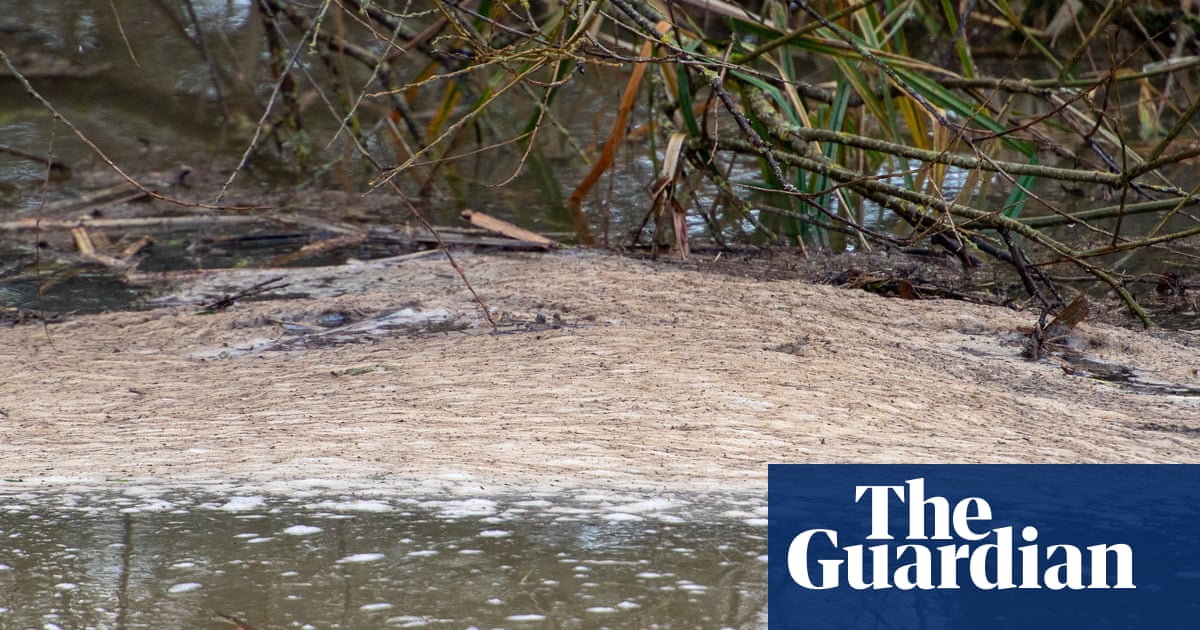
All English rivers have failed to meet quality tests for pollution amid concerns over the scale of sewage discharges and agricultural and industrial chemicals entering the water system.
Data published on Thursday reveals just 14% of English rivers are of good ecological standard, a rating that suggests they are as close to their natural state as possible.
Figures released by the Environment Agency show for the first time that no river has achieved good chemical status, suggesting pollution from sewage discharge, chemicals and agriculture are having a huge impact on river quality. In 2016, 97% of rivers were judged to have good chemical status, though the standard of tests used this time was tougher.
There has been no improvement in the state of English rivers since 2016 when the last data was published, despite government promises that by 2027 75% of English rivers would be rated good. The data shows only 16% of waterways – rivers, lakes and streams – are classed as in ecological good health, the same as 2016.
Pollution from raw sewage discharges by water companies directly into rivers, chemical discharges from industry, and agricultural run-off are key sources of pollution, according to the data.
Blueprint for Water, a coalition of NGOs, condemned the findings , which were released under the EU water framework directive, legislation intended to drive up river water quality across Europe.
The NGOs said the government’s target in its 25-year environment plan for 75% of water bodies in England to be in good condition “as soon as possible” was now all but unachievable.
Ali Morse, the chair of the coalition, said: “Healthy waters are essential for people and nature to survive, and for businesses to thrive, yet none of our rivers are now classed as being in good health. This affects our crops, our wildlife, the nature sites we love to visit, our water bills and so much more. We need the government to ensure we have the legal commitments, high standards, pollution prevention and funding to turn the tide for our rivers.”
Rivers have to meet good ecological and chemical standards to achieve the overall good designation. The EA assessed 4,600 rivers, lakes and other waterways and none was rated as good on both standards. The highest rating of both standards was moderate – relating to 3,740 waterways, with 793 judged poor and 137 rated bad.
The Environment Agency chair, Emma Howard Boyd, said: “Water quality has plateaued since 2016, which isn’t good enough. Today just 14% of our rivers are [rated good]. To get where we want to be everyone needs to improve how they use water now and that means water companies, farmers and the public.”
The EA suggested the failure for any river to reach good chemical standards reflected improvements to its monitoring, which involved searching for the presence of substances in fish and shellfish as well as in water.
Sewage wastewater discharges by water companies into rivers account for damage to 36% of waterways, and run-off from agricultural industries is responsible for 40% of damage to waterways, according to the EA.
Guardian data revealed recently that water companies in England discharged raw sewage into rivers on more than 200,000 occasions last year. In response to the growing outcry over sewage releases into rivers, the government and the EA has set up a storm overflow task force.
But critics said the EA was hamstrung by huge cuts to its budget and a reduction in its water monitoring regime. Greenpeace revealed last year that the agency’s water quality sampling and sampling points had fallen by nearly 50% since 2013.
Feargal Sharkey, a river campaigner and former lead singer of the Undertones, said: “The truth is that 17 years after this legislation was passed and the Environment Agency was put in charge of it, not a single river meets good surface water standards. It is catastrophic.”
The environment minister Rebecca Pow said the water quality data showed urgent action was needed to reduce sewage discharge and address pollution from agriculture and chemicals. She said the data was “not comfortable reading”.
“We need to go further and faster on reducing the environmental impact from storm overflows and other sources of pollution including chemicals and agriculture,” said Pow.
Dr Janina Gray, the head of science and policy at Salmon and Trout Conservation, said English river quality was the worst in Europe. It is also worse than the quality of waterways in Scotland, where 65.7% are in good health, and Wales, where 64% are in good health.
She blamed a lack of political will, lack of investment and cuts to EA monitoring for the “depressing” picture.
“There has been absolutely no progress,” she said. “Every single water body monitored by the EA in England has failed stricter new chemical standards. This means no waterbodies are in overall good health.”
Some of the rivers which failed to meet the good standard of ecological health
River Nene, Northamptonshire & Lincolnshire, poor
River Lee, north London, poor
River Tamar, Devon and Cornwall, poor and moderate
River Wansbeck, Northumberland, moderate
River Cam, Cambridgeshire, poor and moderate
Little Ouse, Cambridgeshire & Bedfordshire, bad











